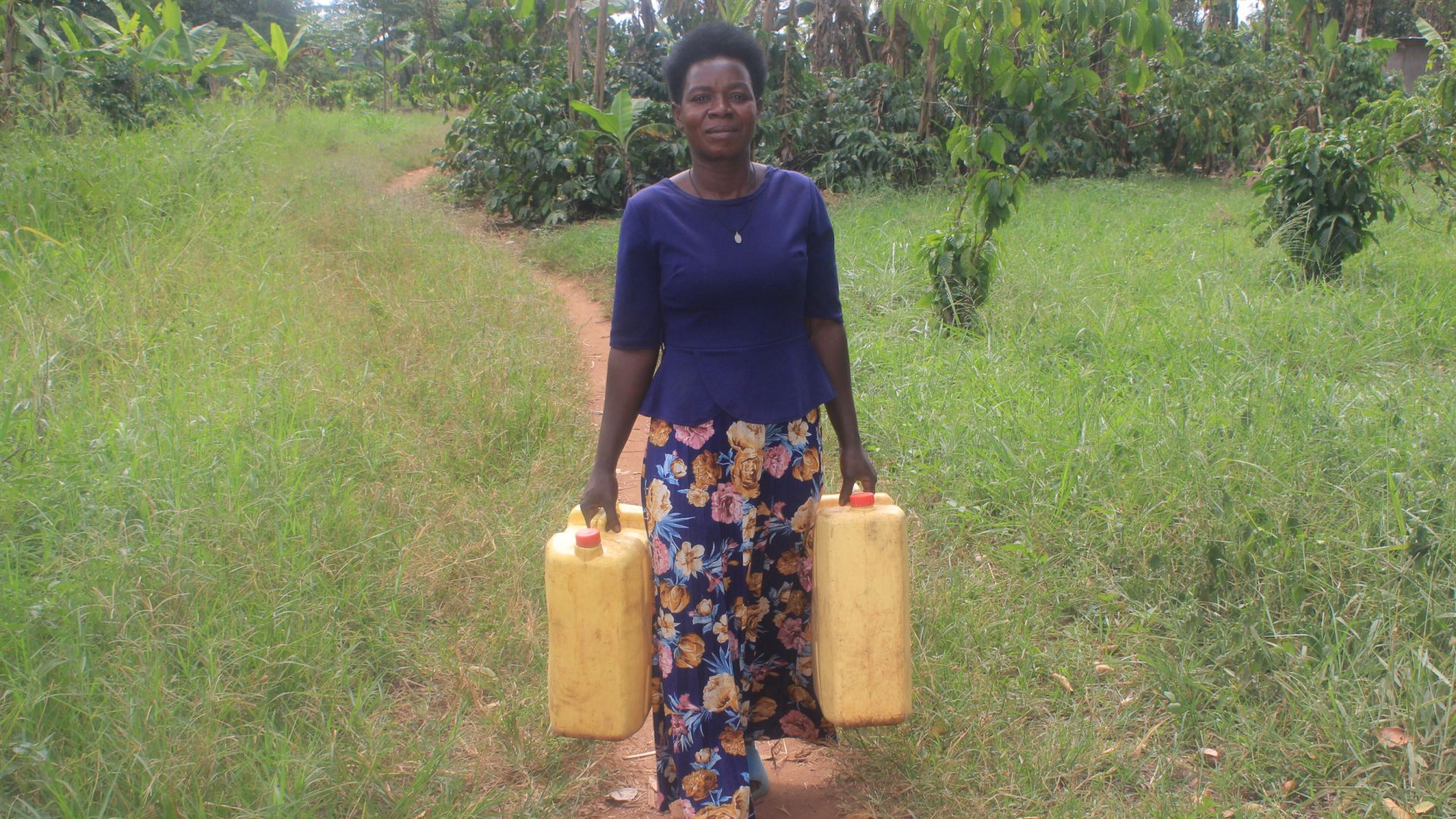For the past 25 years, the 300 residents of Kihagani Community have lived without nearby access to a safe and reliable water source. Every day, women and children walk long distances to collect water from a contaminated earth dam. The journey is exhausting and dangerous.
Although an overcrowded well exists, it is so far away that each trip takes nearly three hours. As a result, most people choose the dam, despite knowing they risk their health every time they drink the water.

People line up their collection containers and wait hours to collect water at the faraway well.
To make matters worse, the route to the dam forces people to cross a dusty, busy road, risking their safety every day to fetch water for their families.
The dam exposes everyone in the community to serious health risks. Waterborne diseases such as diarrhea, cholera, and typhoid frequently affect children the most and continue to weaken families who already face poverty and limited access to healthcare.
Sofia Nyamusana, a 41-year-old mother and farmer, is familiar with the struggle.

Sofia carrying water.
"My child became ill after drinking water from the dam, so I took her to the government health center in Ntooma. While I didn’t pay for medication, as treatment was free, I had to spend money on transport to get there. I was given tablets, but the cost of transport to access them significantly affected my income and created a financial burden for my family," lamented Sofia.
"My children were unable to attend school for several days because they were sick, which disrupted their learning and caused them to fall behind in class," she continued.
"I believe the drinking water that is affecting my health is contaminated and unsafe, indicating poor quality that poses serious risks to my well-being and needs urgent attention," Sofia declared.

The people of Kihagani sent a formal request for support, and we plan to take action. With our help, clean water is within reach for Kihagani.
By providing a clean water solution, we can transform lives. Safe water will eliminate the risk of disease, protect health and resources, reduce travel time, improve sanitation and hygiene, and support farming—allowing the entire community to thrive.
Steps Toward a Solution
Our technical experts worked with the local community to identify the most effective solution to their water crisis. They decided to drill a borehole well, construct a platform for the well, and attach a hand pump.
Well
Abundant water often lies just beneath our feet. Aquifers—natural underground rivers—flow through layers of sediment and rock, offering a constant supply of safe water. A borehole well is drilled deep into the earth to access this naturally filtered and protected water. We penetrate meters, sometimes even hundreds of meters, of soil, silt, rock, and more to reach the water underground. Once found, we construct a platform for the well and attach a hand pump. The community gains a safe, enclosed water source capable of providing approximately five gallons of water per minute. Learn more here!
Community Education & Ownership
Hygiene and sanitation training are integral to our water projects. Training is tailored to each community's specific needs and includes key topics such as proper water handling, improved hygiene practices, disease transmission prevention, and care of the new water point. Safe water and improved hygiene habits foster a healthier future for everyone in the community.
A Community-Wide Approach
In Uganda, we use a Community-Led Total Sanitation (CLTS) approach, which involves several meetings where community members evaluate their own hygiene and sanitation practices to encourage lasting change. During these sessions, natural leaders emerge, motivating the community to recognize and change unhealthy behaviors that affect everyone.
Communities then commit to ending open defecation before we install the water project. Every household builds a latrine to prevent disease and improve hygiene and sanitation in anticipation of their new water source. To support this effort, a Community Development Officer (CDO) is assigned. The CDO encourages each household to set up handwashing stations, animal pens, garbage pits, and dish-drying racks. These additions are crucial in preventing the spread of common diseases.

 Borehole Well and Hand Pump
Borehole Well and Hand Pump
 Rehabilitation Project
Rehabilitation Project
















